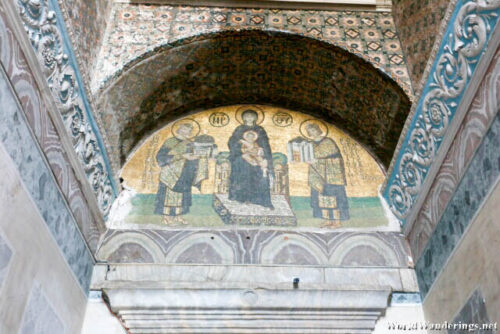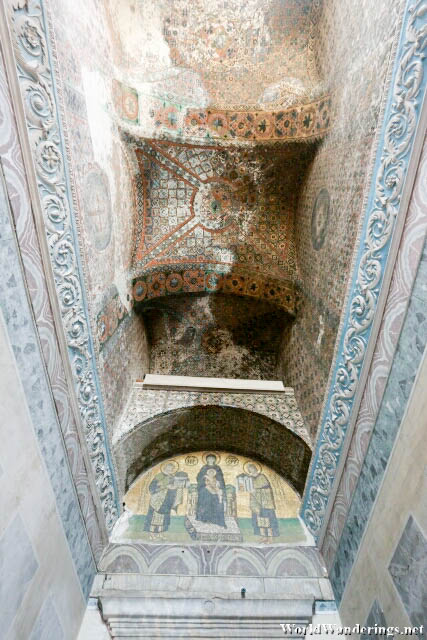The Hagia Sophia was the largest Christian church in the world for more than a thousand here. This was until the Ottoman Turks conquered Constantinople and subsequently converted it into a mosque. While the former church wasn’t torn down, being a mosque, it is only right that it should not have any of the Christian iconography. The Hagia Sophia was famous for its mosaics which is common in Easter Orthodox churches. Actually, the mosaics were being sold as good luck charms until it was ordered that the mosaics be plastered over. This has the fortunate effect of preserving what was left of the mosaics.
It must have taken them years to plaster over the mosaic seeing as to how large the cathedral is. Sometimes the plaster would fall off and reveal what was underneath. In fact, there was an effort to audit what is actually there. It was then plastered over after it was done. It turns out that not everything was covered up. As I was making my way out of the Hagia Sophia, I overheard some tourist guides pointing out something behind us. It turns out that there are some mosaic which are still visible. In this case it was the image of the Blessed Virgin Mary. It was actually rather high up and quite difficult to see but you can still see that it is an actual image of her. I am glad that they didn’t decide to cover this one up considering that everybody seems to know that it is there. Then again, most people would be going out that way and unless someone actually pointed it out, they wouldn’t even know it was there.
[xmlgm {http://www.worldwanderings.net/kml/HagiaSophia.kmz} zoom=19]

